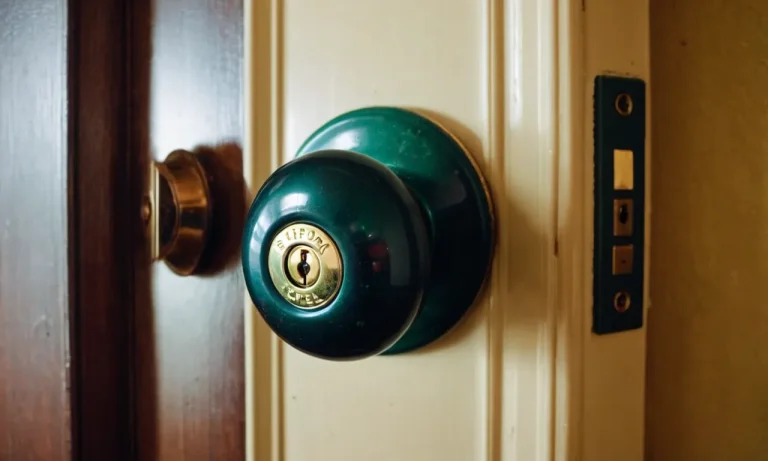Where Do Hotels Get Their Bed Sheets From? A Comprehensive Guide
Have you ever wondered where those luxuriously soft and crisp bed sheets in hotels come from? The answer might surprise you – it’s a complex process that involves various suppliers, manufacturers, and industry standards.
If you’re short on time, here’s a quick answer to your question: Hotels typically source their bed sheets from specialized linen suppliers or manufacturers that cater to the hospitality industry. These companies offer a wide range of high-quality bed linens, including sheets, pillowcases, and duvet covers, designed to meet the specific needs of hotels.
In this comprehensive article, we’ll delve into the intricate world of hotel bed sheet procurement, exploring the different sources, manufacturing processes, and factors that influence a hotel’s choice of bed linens.
We’ll also discuss the importance of quality, durability, and comfort in creating an exceptional guest experience.
The Hospitality Linen Industry
When it comes to providing a luxurious and comfortable experience for guests, hotels rely heavily on the hospitality linen industry. This specialized sector plays a crucial role in ensuring that accommodations are equipped with high-quality bed sheets, towels, and other linens that meet the highest standards of comfort and cleanliness.
Specialized Linen Suppliers
Hotels typically source their bed sheets and other linens from specialized suppliers that cater specifically to the hospitality industry. These suppliers understand the unique needs and demands of hotels, resorts, and other accommodations.
They offer a wide range of products, from crisp cotton sheets to plush towels, designed to withstand frequent laundering and provide a luxurious feel to guests. Companies like AmeriLinen Supply and Alsco are well-known suppliers in this space, offering specialized services and products tailored to the hospitality industry.
Manufacturer Partnerships
Many hotels also establish direct partnerships with leading linen manufacturers. These partnerships allow hotels to have custom-designed linens that align with their brand identity and desired aesthetic.
For instance, luxury hotel chains like the Ritz-Carlton and Four Seasons often collaborate with renowned textile companies to create exclusive linen collections that are unique to their properties. This not only enhances the guest experience but also sets them apart from competitors.
- According to a report by Grand View Research, the global hospitality linen market size was valued at USD 17.4 billion in 2022 and is expected to grow at a compound annual growth rate (CAGR) of 5.2% from 2023 to 2030.
- The report highlights that the increasing demand for luxury accommodations and the rising trend of eco-friendly and sustainable linens are driving the growth of this industry.
Industry Standards and Certifications
The hospitality linen industry is governed by strict standards and certifications to ensure the highest levels of quality and safety. Organizations like TRSA (Textile Rental Services Association) and INDA (Association of the Nonwoven Fabrics Industry) provide guidelines and certifications for linen suppliers and manufacturers.
These certifications cover aspects such as fiber content, thread count, durability, and even sustainability practices. By adhering to these standards, hotels can rest assured that they are providing their guests with linens that meet industry benchmarks for comfort, longevity, and environmental responsibility.
Factors Influencing Hotel Bed Sheet Selection
Thread Count and Fabric Quality
Hotels prioritize thread count and fabric quality when selecting bed sheets because these factors directly impact the softness, durability, and overall guest experience. A higher thread count, typically ranging from 300 to 1,000, generally indicates a softer and more luxurious feel.
However, it’s essential to strike a balance between thread count and fabric quality, as some manufacturers use lower-quality fibers to achieve higher thread counts. According to Sleep Foundation, the optimal thread count for hotel-quality sheets is around 600-800.
Durability and Longevity
Bed sheets in hotels endure frequent washing and heavy use, so durability and longevity are crucial considerations. Hotels often choose fabrics like cotton or cotton blends that can withstand repeated laundering without pilling, fading, or losing their softness.
According to a study by ResearchGate, high-quality cotton sheets can withstand up to 200 washing cycles before showing signs of wear. Hotels also consider the weave of the fabric, with percale and sateen being popular choices for their strength and longevity.
Comfort and Guest Experience
Ultimately, hotels strive to provide a comfortable and enjoyable experience for their guests, and bed sheets play a significant role in achieving this goal. Soft, breathable, and wrinkle-resistant fabrics like Egyptian cotton or bamboo are often preferred for their luxurious feel and ability to regulate temperature.
Additionally, some hotels opt for specialized finishes or treatments that enhance moisture-wicking properties or provide antimicrobial protection. A study by Taylor & Francis Online found that guests’ perception of bed sheet quality significantly impacts their overall satisfaction with their hotel stay.
Cost and Budget Considerations
While hotels aim to provide the best possible guest experience, they must also consider cost and budget constraints. Higher-quality sheets can be more expensive upfront, but they may offer better value in the long run due to their durability and longevity.
Hotels often strike a balance between quality and cost by investing in mid-range sheets with a good thread count and fabric blend. According to HospitalityNet, the average cost of hotel bed sheets ranges from $50 to $200 per set, depending on the quality and brand.
Savvy hotels also look for bulk discounts or negotiate with suppliers to secure better pricing.
Remember, when it comes to hotel bed sheets, quality, comfort, and durability are paramount, but hotels must also consider their budget and operational costs to ensure a sustainable and profitable business model.
Behind the Scenes: Bed Sheet Manufacturing
Have you ever wondered where those luxuriously soft and crisp hotel bed sheets come from? The process behind transforming raw materials into those cozy linens is a fascinating journey that combines skilled craftsmanship, advanced technology, and a commitment to quality.
Let’s take a peek behind the scenes and explore the world of bed sheet manufacturing.
Textile Mills and Weaving Processes
The journey begins at textile mills, where raw fibers like cotton, linen, or synthetic materials are meticulously spun into yarn. These yarns are then woven into fabric on industrial looms, creating the foundation for the bed sheets.
The weaving process is an intricate art, where skilled technicians ensure the proper tension and pattern to achieve the desired thread count and texture. According to Textile World, many mills are embracing advanced weaving technologies to improve efficiency and quality.
Finishing and Treatment Techniques
Once the fabric is woven, it undergoes a series of finishing and treatment processes to enhance its properties and give it that hotel-worthy feel. This can include:
- Dyeing and printing to achieve vibrant colors and patterns
- Chemical treatments for wrinkle resistance, stain repellency, or moisture-wicking properties
- Mechanical finishing techniques like brushing, singeing, or shearing to create a soft and smooth texture
According to a study by Grand View Research, the global textile finishing chemicals market is expected to reach $9.2 billion by 2028, reflecting the importance of these processes.
Sustainable and Eco-Friendly Practices
As consumers become more environmentally conscious, the bed sheet manufacturing industry is embracing sustainable and eco-friendly practices. Many companies are:
- Using organic cotton or recycled fibers to reduce their carbon footprint
- Implementing water conservation and waste management techniques
- Exploring alternative dyeing methods that are less harmful to the environment
According to Textile Excellence, over 60% of textile companies are now prioritizing sustainability initiatives. This commitment not only benefits the planet but also appeals to eco-conscious hotel guests.
From the meticulous weaving processes to the intricate finishing techniques, the journey of bed sheet manufacturing is a true testament to the dedication and craftsmanship that goes into creating those cozy hotel linens we all love.
So the next time you slip into those crisp, luxurious sheets, take a moment to appreciate the skilled hands and innovative minds behind the scenes that make it all possible. 😊
Maintaining Hotel Bed Sheet Quality
Ensuring the quality and cleanliness of bed sheets is a top priority for hotels, as it directly impacts guest satisfaction and the overall reputation of the establishment. To maintain the luxurious feel and pristine condition of their bed linens, hotels employ a multi-faceted approach that involves meticulous laundry processes, strategic inventory management, and comprehensive staff training.
Laundry and Cleaning Processes
Hotels rely on state-of-the-art industrial laundry facilities equipped with high-capacity washers, dryers, and specialized cleaning solutions. These facilities follow rigorous protocols to ensure thorough cleaning and sanitization of bed sheets.
According to the Centers for Disease Control and Prevention (CDC), washing bed linens in water heated to at least 160°F (71°C) is recommended to kill bacteria and viruses. Many hotels also incorporate ozone or ultraviolet light disinfection systems to further enhance the cleanliness of their linens.
😊
Inventory Management and Replacement Cycles
Effective inventory management is crucial for ensuring a consistent supply of fresh, high-quality bed sheets. Hotels typically maintain a rotation system, where bed linens are replaced on a regular schedule, often every few months or after a certain number of wash cycles.
This practice helps to maintain the integrity and softness of the sheets, as excessive use and washing can cause them to become worn or discolored. According to a survey by the American Hotel & Lodging Association, the average hotel replaces its bed linens every 6-12 months, with some luxury hotels opting for even more frequent replacements.
Staff Training and Handling Procedures
- Hotels invest significant resources in training their housekeeping staff on proper bed-making techniques and handling procedures for bed linens. This includes:
- Folding and storing techniques to prevent wrinkles and creases
- Handling guidelines to minimize wear and tear
- Inspection protocols to identify and remove damaged or stained sheets from circulation
Moreover, many hotels have implemented strict policies and procedures for handling soiled linens, ensuring they are promptly removed from guest rooms and transported to laundry facilities in sealed bags or carts.
These measures not only maintain the cleanliness and quality of the bed sheets but also promote a hygienic environment for guests and staff alike.
By adhering to these rigorous standards and practices, hotels strive to provide their guests with a truly luxurious and comfortable sleep experience, ensuring that their bed sheets remain fresh, soft, and inviting throughout their stay. 👏
Conclusion
The journey of hotel bed sheets from the manufacturing facility to the guest rooms is a fascinating and intricate process. From specialized linen suppliers and industry standards to fabric quality, durability, and comfort considerations, every aspect plays a crucial role in ensuring that hotels can provide their guests with a luxurious and comfortable sleeping experience.
As the hospitality industry continues to evolve, hotels are increasingly prioritizing sustainability, eco-friendly practices, and guest satisfaction. By partnering with reputable linen suppliers and manufacturers, implementing effective laundry and inventory management systems, and training staff on proper handling procedures, hotels can ensure that their bed sheets remain fresh, crisp, and inviting for every guest.








